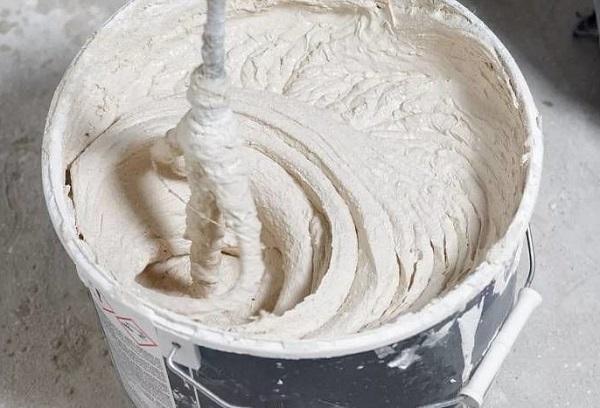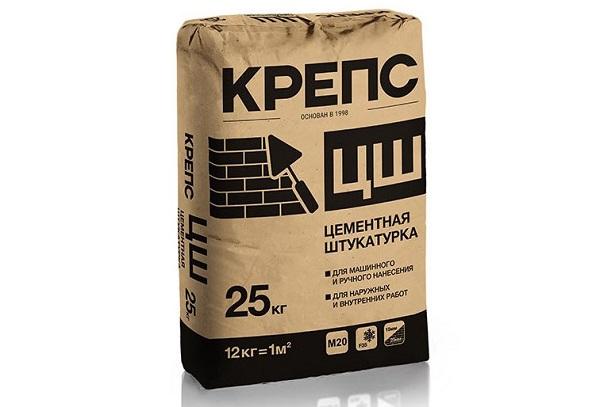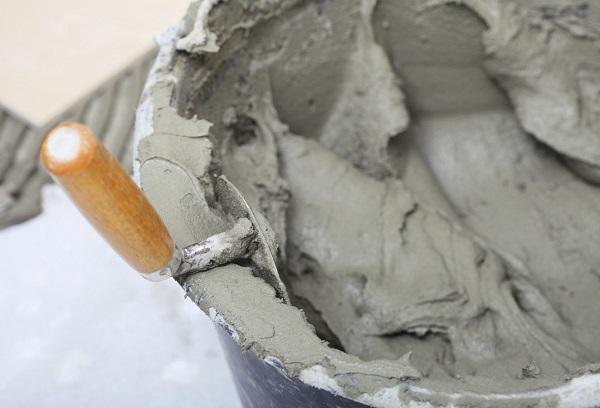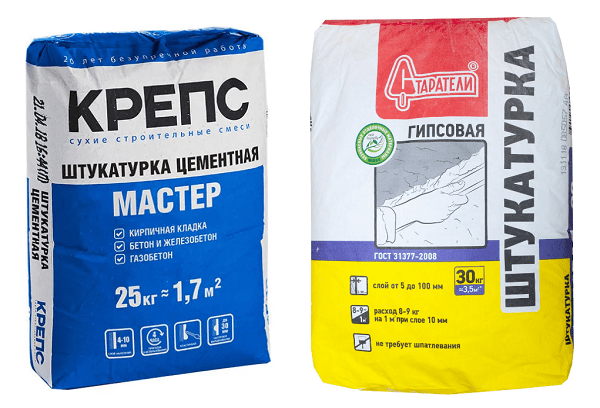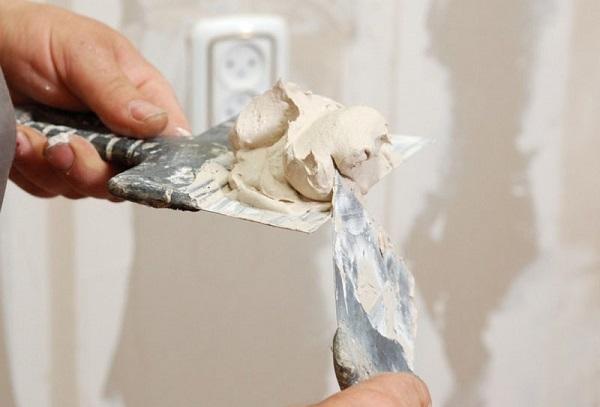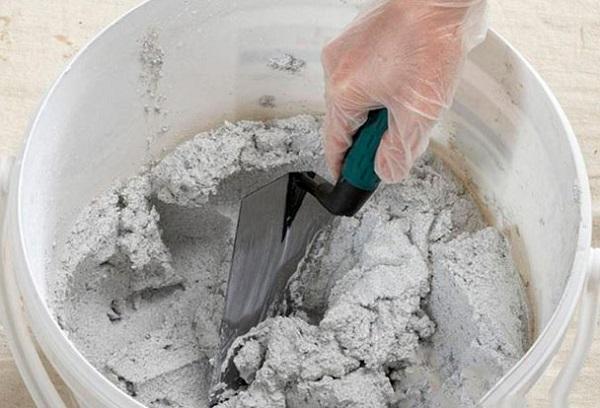Gypsum or cement plaster - which is better for leveling walls?
Content:
Homeowners often want to save money on repair work and take on the task themselves. Beginners in construction may be interested in the question of which plaster is better, gypsum or cement. Some want to save money on purchasing material, others are more concerned about quality. In any case, it is better to understand the characteristics of building mixtures before purchasing them and starting work.
What is gypsum plaster
Gypsum plaster is produced in the form of a loose mixture, which, after dilution, becomes an elastic white solution. The material is applied to brickwork, concrete, wood to smooth out irregularities, joints, and deep cracks. It is convenient to finish walls and ceilings with this putty, as it is flexible and easy to apply. However, it should be borne in mind that gypsum can only be worked in rooms where normal humidity levels are maintained.
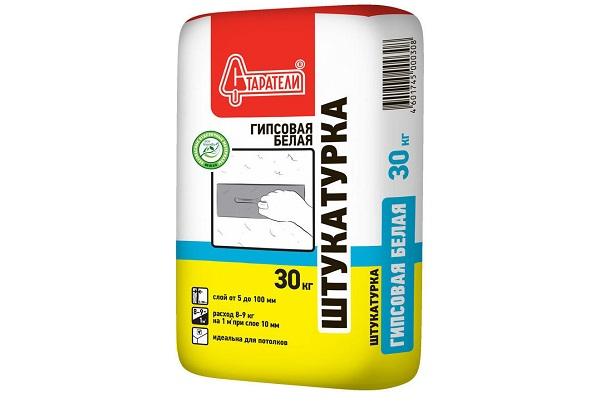
Gypsum powder is a natural mineral. First, the raw material undergoes high-temperature treatment, and at the next stage it is crushed.In addition to gypsum, the mixture contains polymer additives and various fillers.
Compared to cement mortar, gypsum putty is consumed more economically, which makes finishing cheaper. The amount of material used is directly related to the presence of defects in the plastered surface (potholes, cracks) and level deviations.
Scope of application, types of gypsum plaster
The material is in demand for indoor renovation work, as it is safe from an environmental point of view. Gypsum mortar is used to level walls made of brick, concrete, tongue-and-groove slabs, and aerated concrete blocks. The composition is not used for finishing facades and partitions in unheated rooms; it cannot be used in damp cellars and basements.
The difference in filler particle sizes determines the types of mixture. It happens:
- coarse-grained - it is used where it is necessary to create a thick layer (over 50 mm);
- medium fraction - the most popular type, used to smooth out significant differences in walls and ceilings (layer up to 50 mm thick);
- fine-grained - used for plastering with a thin layer (no more than 8-10 mm).
Gypsum-based plaster is also classified depending on the method of application. The composition can be applied manually or mechanized - using special machines or pneumatic devices.
Using a coarse-grained mixture, a base layer is created, which is subsequently puttied, covered with panels or other cladding. Finely ground gypsum is used for the finishing coating. Mixtures are divided according to purpose. Some are applied only to vertical surfaces. Others are suitable for walls and ceilings. There is also a high-strength compound designed for flooring.
Gypsum plaster can be applied to walls without beacons. The solution is applied to the cleaned and primed surface with a wide spatula with a slight excess. After this, the wall is smoothed using the rule, removing excess plaster. Then they begin finishing the next fragment. After half an hour, the plastered wall is treated again with the rule to cut off any remaining irregularities. After a day, the surface is cleaned with a special brush or spatula and primed.
What is cement plaster
Cement plaster is most often used as a finishing material. It is used for rough finishing. Cement is a binder of inorganic origin, produced from clinker and fine gypsum. The composition based on it has high strength, moisture resistance, and a long service life.
Using cement plaster, you can eliminate masonry defects, seal cracks and other surface imperfections. Finishing work can be carried out both inside and outside the premises. After hardening, cement is not afraid of moisture and cold.
To give the plaster water-repellent properties, hydrophobic additives are added to the composition to prevent wetting and destruction of surfaces. The material does not deteriorate due to temperature changes. A special feature of cement plaster is its long setting time.
Scope of application, types of cement plaster
Cement mixtures are used for plastering residential, commercial, and industrial buildings. This plaster is used for finishing balconies, cellars, swimming pools, basements, laundries, and building facades.
Conventional mixtures are used to level walls in outbuildings and basements.The universal-purpose material allows you to achieve a smooth surface, so its scope of application is wider. A high-quality solution is used where ideal quality of work is needed; it requires application in 5 layers.
Types of cement plaster:
- cement-sand – such a mixture is considered clean, a small amount of modifying additives is added to it, the ideal sand fraction is 0.5-2 mm;
- cement-lime – the second main component in the mixture is lime.
Both compositions are used for leveling bases, rough finishing walls, filling joints between slabs and cracks, creating a layer of heat and sound insulation, and as a pre-finishing finish. The cement included in the mixture can be of different grades (from M-150 to M-500). A higher grade in the composition indicates the possibility of using the plaster for external finishing work and rooms with high humidity.
Cement-lime mixtures are recommended for use only for interior decoration. Lime added to the composition gives the solution greater plasticity, protects surfaces from the appearance of bacteria and fungus, and provides better adhesion to the base. Such mixtures are used less frequently than cement-sand mixtures.
It is convenient to prepare the solution by mixing the composition with a drill with a “mixer” attachment. The wall is pre-cleaned, after which a primer is applied. Preparation will ensure high quality work. Then beacons are installed in increments of 1-1.5 m (depending on the length of the rule). The plaster is spread onto the base with a trowel. The next step is to stretch the applied mixture using the rule. If tubercles remain on the surface, after the solution has set, it is rubbed with a plaster float.
What is the difference?
Already from the name it is clear that the basis of the gypsum building mixture is gypsum, and in cement plaster the main component is cement. The purpose in both cases is the same - to level the surface before applying the final finish.
Cement-sand mixtures are a coarser material that is more often used for outdoor work, since dried cement is not afraid of high humidity and temperature changes. After hardening, its crystals grow into each other, forming strong bonds.
Gypsum mixtures are used exclusively in indoor areas with low and normal humidity levels. For example, in a bathroom it is not recommended to decorate the walls with plaster, even under tiles. Moisture will gradually penetrate through the seams, which will lead to a decrease in the strength of the gypsum plaster and the tile layer will sooner or later fall off.
comparison table
The table clearly shows the characteristics of building mixtures based on gypsum and concrete, their advantages and disadvantages, and differences. After reviewing the data provided, it will be possible to draw a conclusion which composition is more suitable.
| Plaster | Cement | |
| Characteristics | Consumption – 8-9 kg/sq. m;
setting time – 1 hour; complete drying of the surface – 3 hours. They work with this mixture at temperatures from +5° to +30° C. Without the use of reinforcing mesh, the permissible thickness of the applied layer is no more than 50 mm. Plaster places little load on load-bearing structures, as it is light in weight. |
The solution has a high density and specific gravity of 1600-1800/m3. Compressive strength – 2.5-22 MPa (depending on the brand of cement). It is applied at temperatures from +5° C, but there are also winter mixtures that can be worked with at slightly sub-zero temperatures.A layer thickness of up to 40 mm can be applied at a time. When using reinforcing mesh, the thickness can be increased to 70 mm. Setting time is from 30 minutes to 3 hours. |
| Advantages | Environmental safety, heat and sound insulating properties, fire resistance, ability to absorb excess moisture from the air, high adhesion. | Strength, wear resistance, high degree of adhesion to the base material, moisture resistance, resistance to temperature changes, low cost. |
| Flaws | Low strength, not suitable for rooms with high humidity and outdoor work. | Long setting period, high weight of cement-sand mixtures. |
| Price | From 340 rubles per package weighing 30 kg. | From 240 rubles per package weighing 25 kg. |
The price of the product depends on the manufacturer’s brand, packaging volume and other parameters. You can buy plaster not only in construction centers, but also by ordering it online (in this case you will have to spend extra money on delivery).
Pros and cons of gypsum plaster
Gypsum plaster is the main material used for interior decoration. In addition to gypsum, the composition includes various additives that affect the characteristics of the composition. Using additional components, you can speed up the setting of the solution and increase adhesion.
The main advantages of gypsum plaster:
- excellent leveling ability - the walls are perfectly smooth, which allows you to skip the puttying stage;
- high adhesion – gypsum adheres well to any surface;
- low consumption - compared to cement plaster, gypsum mixture is consumed more economically;
- possibility of applying a layer thickness of 50 mm at a time;
- ease of use - the composition is easily applied, leveled and smoothed;
- good heat and sound insulation - after applying plaster, the wall transmits less noise and becomes warmer;
- no traces of leaks - if the plastered surface has been wet once, after drying the traces of leaks disappear.
There were some downsides too. This mixture is more expensive. Gypsum mortar has a high setting speed, so it must be diluted in small portions. The material requires preliminary preparation - before application, a primer must be applied to concrete surfaces; a metal base requires coating with anti-corrosion impregnation. This primer cannot be used for outdoor use or in rooms with high humidity levels.
Pros and cons of cement plaster
Cement plaster is not losing its position in the market; such mixtures are still in demand. This is primarily due to their versatility. Cement-based plaster can be used for external and internal work. The finishing material has other advantages, including:
- long-term viability of the solution - the cement sets quite slowly, which allows you to work thoroughly without rushing;
- high strength and wear resistance - after the material has completely hardened, it will be difficult to damage it;
- affordable price - cement plaster has the lowest cost compared to other compositions.
Such mixtures also have their disadvantages. The plaster does not adhere well to the concrete base and takes a long time to dry. It will take 2-3 weeks for the applied composition to completely harden.The plastered surface looks quite rough, so it needs to be puttied.
Working with such plaster is not very pleasant; cement dust settles on all surfaces and penetrates the respiratory tract. It is impossible to speed up the drying of a plastered wall using hair dryers and heat guns; the plaster will certainly crack. It is necessary to wait until the surface hardens naturally.
What is better to choose
You should choose which material to work with based on the characteristics of the plaster. The cement-based mixture is universal; it is useful during renovations inside the house and for plastering external walls. Gypsum, as a more capricious material, is used only for finishing the interior space of the room.
If you are running out of time during renovations, it is better to choose gypsum plaster to level the walls in your apartment. It gives such a smooth surface that there is no need for puttying. You can immediately apply paint or wallpaper. A gypsum solution is also useful in cases where it is necessary to immediately lay a thick layer of plaster on a curved wall - up to 5 cm.
Cement is indispensable when working with facades, balconies, cellars and other rooms where there is no heating, as a result of which temperature changes and increased humidity levels are possible. In addition, the cement mortar is highly durable; this coating will last for many years. It is better not to use a cement-based composition for finishing flimsy walls, as it has considerable weight.
When choosing which is better suited, gypsum or cement plaster, evaluate the characteristics of the room itself. What is important is how stable the temperature and humidity conditions will be, whether interior or exterior finishing is required.The cement composition has a wide range of applications, but it also has its disadvantages. It is better to use gypsum for work in a residential area. You can immediately apply paint or wallpaper to such plaster.
